The rapidly changing landscape of current optical networks has placed a premium on efficient data transmission. Among these are Wavelength Division Multiplexing (WDM) and its passive form, which significantly improves the capacity and flexibility of optical communication systems. In this case, passive WDM technology employs passive optical components to combine and divide multiple light wavelengths, thus transmitting different data streams simultaneously over one optical fiber. This paper introduces the basics behind passive WDM; it also outlines some fundamental principles and technologies used in it and demonstrates how important they are in enhancing bandwidth efficiency while simultaneously reducing operational costs during network deployments. By looking into operational mechanics, benefits, and applications of passive WDM, this article wants to give readers knowledge about passive WDM’s role in today’s optic networks.
Table of Contents
ToggleWhat is DWDM in Passive WDM Systems?
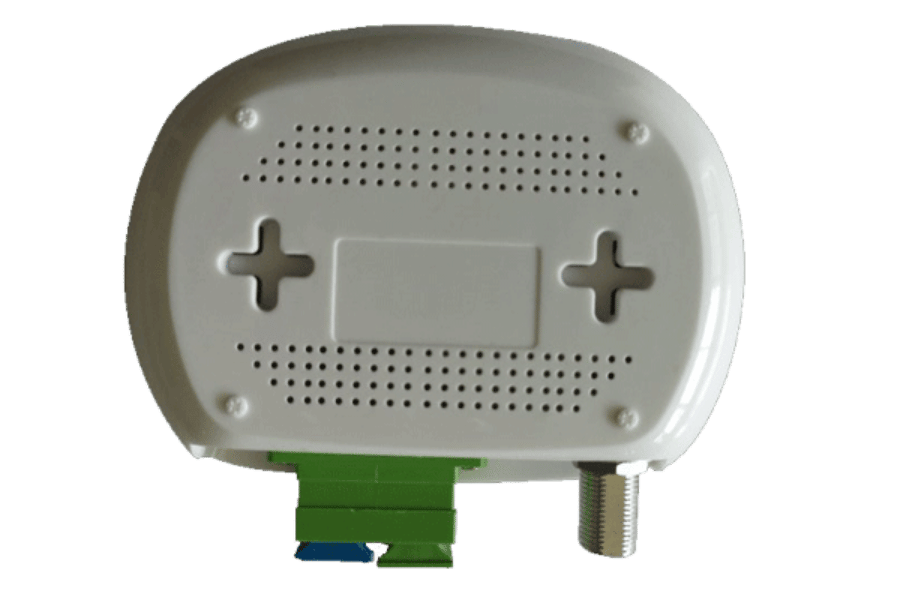
Key Features of DWDM Technology
Dense Wavelength Division Multiplexing (DWDM) is a complex version of Wavelength Division Multiplexing that expands the capacity of optical networks by allowing more channels to be sent down one fiber at a time. Some important things about DWDM technology are:
- High Channel Density: Bandwidths greater than 100 Gbps per channel can be achieved as DWDM systems are able to contain many channels in a single optical fiber. This allows for faster data transfer rates where they are needed most, which is becoming increasingly common.
- Spectral Efficiency: By increasing the number of wavelengths used closely together, spectral efficiency is improved with DWDM so that operators have more opportunity to make full use of existing fibre infrastructure without needing extra equipment.
- Long-Distance Transmission: DWDM technology also has low signal-to-noise ratios over long distances because it uses advanced optical amplifiers and low levels of dispersion, making them ideal for metro and regional networks.
- Flexible Network Topologies: Point-to-point or ring network architectures can be created using DWDM systems that support mesh topology configurations too; all depending on what best fits into different areas if necessary when planning out these types of networks.
- Scalability: Adding transponders or channels onto an already set-up system does not require major modifications because there is room left within current infrastructures, thereby meeting future needs where data growth might occur frequently.
Enhanced Signal Integrity: For error-free transmission between sites separated by tens or hundreds of kilometers, advanced modulation formats must be employed alongside other signal processing techniques, such as those used in dense wavelength division multiplexor(DWDM)systems.
How DWDM Enhances Bandwidth in Optical Networks
Optical networks use Dense Wavelength Division Multiplexing (DWDM) to increase bandwidth by transmitting multiple wavelengths simultaneously through one optical fiber. This is done by using laser light with different wavelengths for each channel that carries independent streams of data. According to industry studies, DWDM can significantly increase fiber capacity – over 80 channels can be squeezed into the same fiber, each having a speed of 100 Gbps, resulting in aggregate data rates of many terabits per second. Moreover, it works well at long distances because it has better signal integrity and lower attenuation than other methods; therefore, repeaters are not needed frequently along the line. Therefore, network operators can obtain more throughput without changing much infrastructure while catering to various needs, such as interconnecting data centers or wide area networks, according to industry analysis reports on DWDMS.
Applications of DWDM Networks
- Telecommunications: For long distance voice and data transmission in telecom networks, DWDM is the most widely used which enable mobile telephony and internet services provision among others.
- Data Centre Interconnection: It creates room for high capacity interconnections between data centers thus supporting cloud computing and large-scale storage solutions.
- Video Transport: Broadcasting of high-definition video content heavily relies on this technology since it is essential for video conferencing services as well; mostly a fiber pair is used.
- Enterprise Networks Deploy a Range of Passive Solutions Provided by Opticonnect Systems B.V.: Businesses use DWDM as an internal network infrastructure that can withstand heavy traffic loads over multiple sites and increase the speed at which information passes through it.
- Research and Education Networks: High-capacity links based on DWDM are necessary for educational institutions (colleges/universities) together with their research partners worldwide when transferring big size datasets among campuses during collaborative projects.
How does CWDM Compare to DWDM?
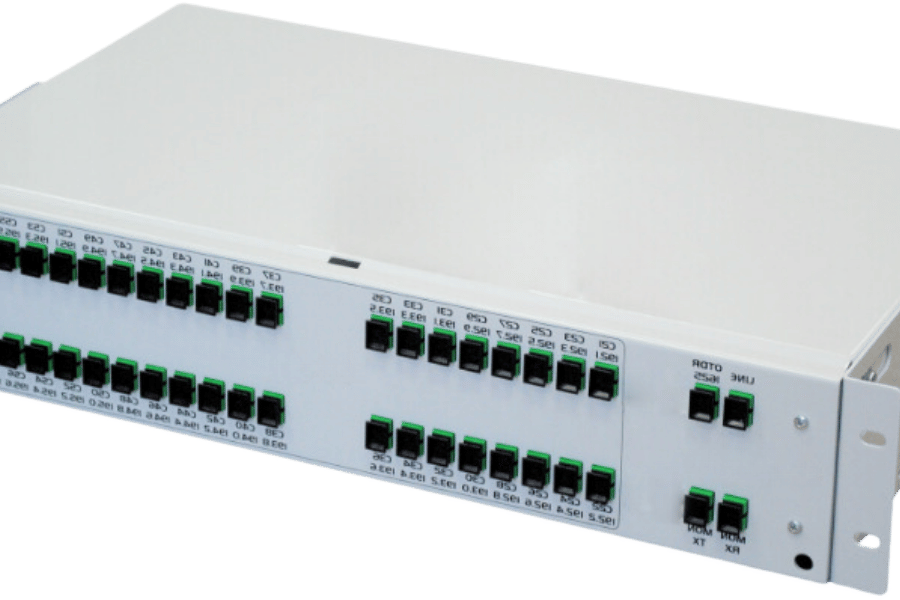
Differences Between CWDM and DWDM
Both Coarse Wavelength Division Multiplexing (CWDM) and Dense Wavelength Division Multiplexing (DWDM) are wavelength multiplexing technologies, although they have different designs and applications. Here are their differences:
- Wavelength Spacing for DWDM Channels: CWDM has a channel spacing of 20 nm, which is wider than that of DWDM. Because of this, it can accommodate up to 18 channels within the C-band (1530 to 1565 nm). On the other hand, DWDM channels have much narrower spaces—ranging from 0.8 to 1.6 nm only—which allows for over 80 channels within the same bandwidth.
- Distance and Signal Integrity: While able to preserve signal quality over several hundred kilometers with minimal degradation, DWDM is meant for long-haul transmission, thus making it suitable in backbone networks. As opposed to this, CWDM should be used when distance is limited, even though it has the potential for higher signal loss compared with a DWDM system.
- Cost-Effectiveness and Complexity: Being less complex and more affordable than its counterpart makes CWDM favorable among enterprises and small-scale networks where there may not be enough funds available or technical know-how required by complex systems such as those employed in DWDM technology. However, despite being expensive due to advanced signal processing capabilities needed along its path, data flows through network elements management functions involved, etc., once implemented, cost is justified considering capacity efficiency delivered by high-bandwidth services of telecommunications networks supporting data-heavy applications.
These differences are important factors in determining which technology works better for what application based on capacity, distance requirements, and financial capabilities available.
Advantages of Using CWDM
- Affordability: Because they’re designed simpler and use cheaper equipment, CWDM systems are generally considered more cost efficient which makes them great for small businesses.
- Simplicity: Installation and maintenance are less complex with CWDM systems because of their simple architecture that allows for easy deployment.
- Bandwidth capacity: With a possible 18 channels in the C-band alone, it offers enough bandwidth capacity suitable for different applications without overwhelming the infrastructure.
- Passive Solutions for Shorter Distance Suitability. CWDM offers a passive solutions range for shorter-distance suitability. It has been optimized to work over short distances of up to 100km, making it ideal for enterprise applications and metropolitan area networks (MANs).
- Interoperability: In most cases legacy systems can still be used alongside CWDM technologies thus supporting integration without seams as well providing upgrade paths.
When to Choose CWDM over DWDM
Between CWDM and DWDM, which one to choose depends on a number of factors. Below are some things to consider according to needs:
- Budget Constraints: If you’re operating with a tight budget, CWDM is usually more cost-effective due to its lower implementation costs and simpler technology.
- Distance Requirements for the Use of Mux and Demux in CWDM or DWDM Systems.: For transmission distances under 100km where metropolitan networks are specifically optimized for use, it is better to go with CWDM than DWDM which suits long hauls better.
- Bandwidth Needs: If the application does not require for very high capacity as provided by DWDM; then there can be enough bandwidth supplied by up to 18 channels C-band capable CWDM acting as flexible passive solution.
- Complexity and Scalability in Passive CWDM and DWDM Deployments.: In environments where simplicity is key or low maintenance is required, then it would be easier to deploy/manage comes since they are less complex compared to drums, making them suitable even for small enterprises or simple applications.
- Legacy System Compatibility: Businesses can upgrade their infrastructure without necessarily revamping their whole network because often times cwm technologies integrate well with already existing systems.
Evaluate these considerations against your organization’s unique requirements so that you can make an informed choice.
What Role Do Passive Splitters Play in WDM Systems?
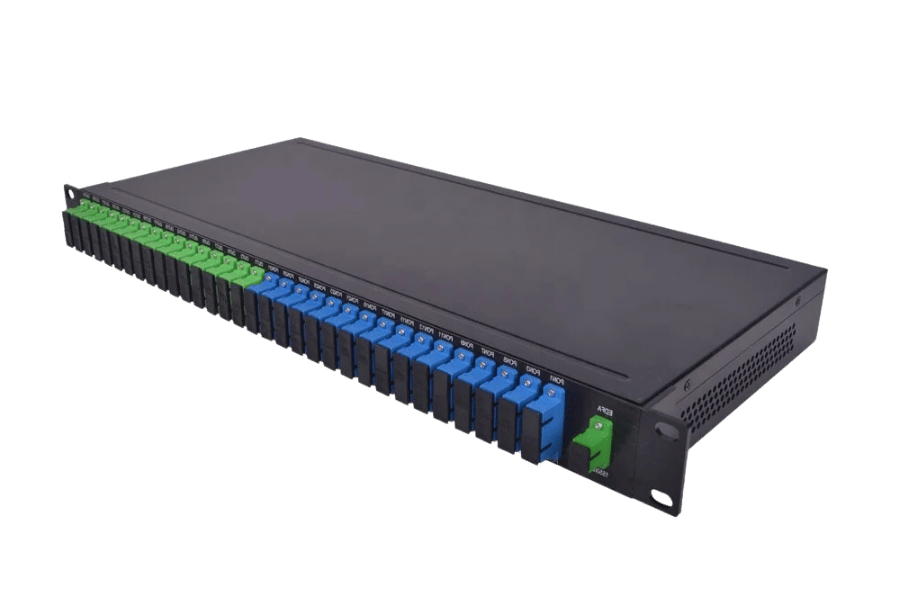
Functions of Optical Splitters in WDM
Optical splitters have a vital function in Wavelength Division Multiplexing (WDM) systems and can perform the following tasks:
- Signal Distribution: This divides one optic signal into numerous outputs so that data can be spread over many channels without losing any signals. Such a passive approach is useful for effective data management.
- Network Scalability: Splitters allow multiple connections from a single input fiber, which helps expand optical networks and, hence, improves their scalability.
- Load Balancing: They ensure that traffic is evenly distributed across paths by sharing optical signals among various routes thereby optimizing performance within a network.
- Cost Effectiveness: The implementation of these devices reduces the number of transmission lines needed thus cutting down on infrastructure costs while maximizing channel utilization.
Maintenance of Quality: Good-quality splitters should have low insertion loss and minimum signal degradation, which ensures that WDM systems operate reliably.
Benefits of Passive Splitters in Data Centers
To make sense of data centers, it is possible to use different types of splitters which include passive ones. Such an implementation has several benefits in terms of efficiency and performance:
- Energy Efficiency: These splitters do not need power from outside sources which means they save a lot on energy consumed within any given data center. Opticonnect Systems B.V does offer passive solutions.
- Reduced Complexity: By reducing the number active devices required for deployment as well potential points where failure can occur; passives simplify network architecture thus making things easier during setup or even troubleshooting.
- Cost Saving: Initially, absence active components decreases investments while their maintenance needs being minimal cuts down on operational costs in long run.
- Better Signal Quality: Passives are made with top-notch quality standards to ensure that insertion losses and crosstalks become negligible so as not to interfere with good signal transmission across the network at any point whatsoever.
- Flexible Configuration: Different splitting ratios can be achieved through the utilization of various passive splitters, thereby allowing networks to be configured based on specific bandwidth requirements or scalability options. Hence, they easily adapt to changing needs within data centers over time.
In general, integrating infrastructure elements called passive splitters into data centers guarantees high performance coupled closely with reliability while keeping costs manageable.
Exploring Passive Optical Networking Solutions
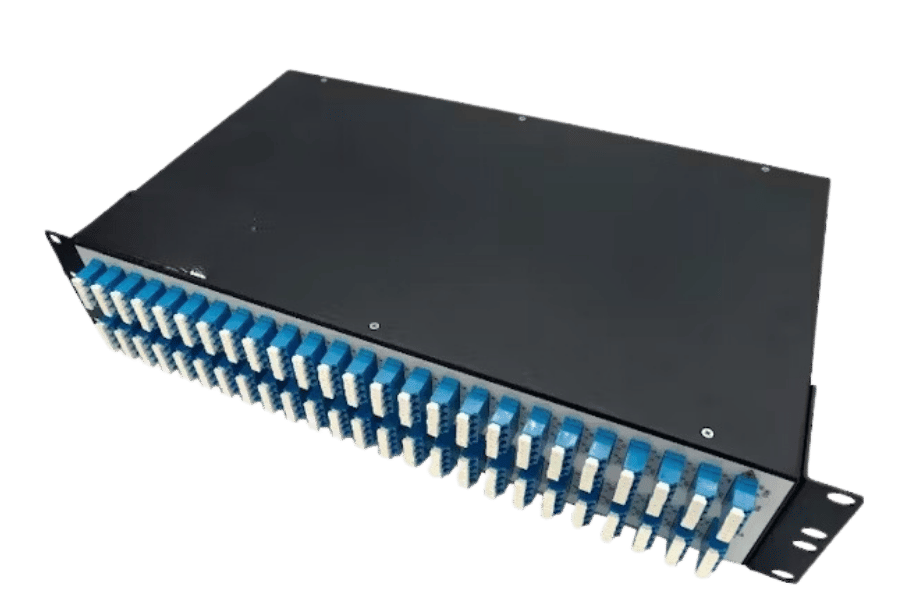
Implementing Passive Optical Network Systems
Implementing Passive Optical Network (PON) systems requires certain critical steps to be followed for successful deployment and operation. The first step involves evaluating the needs of the network and identifying which PON architecture suits them best, whether GPON, EPON, or any other variation. Then comes the design stage, where physical aspects are taken into account, such as where to place OLTs (optical line terminals), ONUs (optical network units), and passive optical splitters, among others, so as to achieve optimum signal distribution and coverage.
What follows is choosing high-quality optical components; this includes selecting appropriate splitters that should meet required specifications in terms of insertion loss and bandwidth and be able to integrate with CWDM or DWDM systems. During installation, it is necessary to follow industry standards for safety reasons; thus, fiber handling ought to be done correctly coupled with proper splicing techniques.
After installing them, round testing must be carried out so as not to leave anything unchecked since various ways can be verified, like checking optical power levels or making loss measurements up till end-to-end connectivity has been achieved, which will then ensure efficient working of the PON system according to expected service levels. In the end, ongoing monitoring and maintenance have to be put in place if we want our networks to grow; therefore they should promptly attend to any arising problem that may affect their scalability over time
Cost-effective Benefits of Passive Optical Networks
Optical passive networks (PONs) have several inexpensive features that attract service providers and business networks, especially when combined with passive CWDM and DWDM. To begin with, the distribution network does away with active electronic components, a move that cuts both capital expenditure and operations costs thereby reducing maintenance needs. Secondly, PON systems are designed based on point-to-multipoint architecture which lets service providers deliver bandwidth to multiple users through one fiber hence considerably reducing the quantity of fiber required as well as associated infrastructure.
In addition to this, scalability in terms of capacity within these types of networks means there can be future growth without having to make many physical changes, which leads to cheap expansion whenever demand grows rapidly, often supported by passive solutions like CWDM or DWDM. More so, energy efficiency, among other benefits offered by passives, also aids in lowering operational expenses over time. Finally, ease of installation coupled with reduced requirement for skilled labor during deployment may speed up network roll-out, thus cutting initial setup costs while accelerating ROI realization. Generally speaking, all these advantages make PONs financially feasible for present-day broadband requirements.
Passive vs Active Optical Networking Solutions
In contrast to a passive optical network (PON), an active optical network (AON) uses powered electronics to manage data transmission across the network, usually requiring a pair of fibers for efficient data flow. With AON systems, you can allocate bandwidth more flexibly and achieve longer distances because they are made up of active components that have signal amplification ability. Nevertheless, it is costly as there will be more capital and operational expenses incurred due to maintenance needs and power consumption associated with electronic devices.
Although PONs are cheaper and easier to install or maintain than any other type of fiber optic system, such as AONs, this does not mean they are limited in application scenarios where different levels of bandwidth may be necessary; rather, they provide customization options for performance optimization towards specific applications. The choice between these two approaches should consider factors like the specific needs of the network being established, financial constraints/budget available, future growth expected, etc., so that technical requirements can be met without exceeding financial capabilities.
How do SFP Modules Integrate in Passive DWDM Applications?
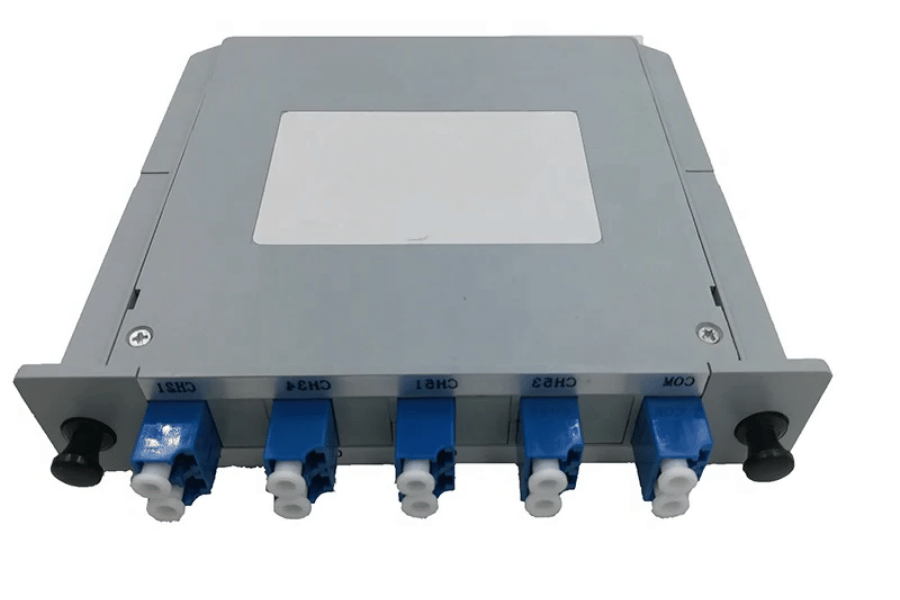
Compatibility of SFP Transceivers with Passive WDM
Small form-factor pluggable (SFP) transceivers are created to work with Passive Wavelength Division Multiplexing (PWDM) systems to enable multiple signal transmissions over one fiber optic cable. They have to operate on the same light wavelengths as those specified by WDM channels for such compatibility to exist. The common way in which SFPs work efficiently with passive WDM is through multiplexing different data streams using standard wavelengths like 1310 nm or 1550 nm. However, this means that you should configure your transceiver according to the parameters of a WDM system, such as channel spacing and maximum distance, among others, so as not only to ensure good performance but also to preserve the integrity of signals being transmitted through it. In addition, there might be some protocols supported by certain types of SFPs together with their rates, which must be taken into consideration during the selection process, especially when dealing with applications based on passive optical networks using WDM technology.
Enhancing Fiber Capacity with SFP Modules
To allow wavelength division multiplexing (WDM) and other technologies to send many data streams over single or multiple fibers, one needs SFP modules. The number of simultaneous transmissions can be increased by adding some SFP transceivers with different wavelengths into the mix, which ensures that we are using most of the fiber optic cables available today. Another good thing about them is that they have various data rates as well as protocols supported, so when network requirements change, these things can still be used without any problems. This, therefore, means that the capacity should not only be optimized in terms of fibre but also in relation to this equipment depending on what signals will pass through it at a given time, hence selecting them wisely while considering optical network compatibility with the application’s needs for maximum efficiency. This way ensures a longer life span for current infrastructure at a lower cost since more bandwidth can now be accommodated without necessarily having to purchase new fiber optic lines.
Optimizing Optical Networks with Multiplexers
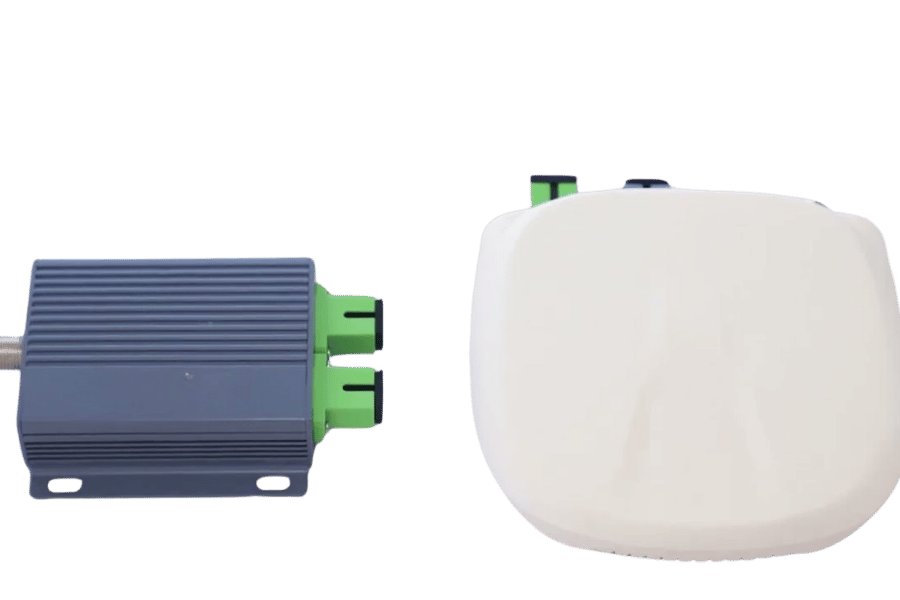
Importance of Passive WDM Multiplexers
Passive Wavelength Division Multiplexers (WDMs) are vital in optimizing optical networks by allowing many light wavelengths to be combined and transmitted over one fiber. This means they can make the most out of the existing fiber infrastructure as well as greatly increase bandwidth without adding more fibers, using various passive components. Passive WDM multiplexers do not need electrical power, so they can improve system reliability and ease maintenance. They minimize signal loss and cross-talk between channels, enabling efficient data transmission while enhancing overall network performance. Additionally, being able to seamlessly integrate with SFP transceivers and other optical devices makes them necessary for scalable and flexible network designs where huge amounts of data traffic need to be accommodated as growth takes place.
How Multiplexers Improve Fiber Utilization
Multiplexers assist in making use of fiber by sending many signals over a single optical fiber concurrently, which enhances the capacity of the present infrastructure. Multiplexers can allow various data streams to work on different light wave frequencies so that additional physical fibers are not required through methods like Wavelength Division Multiplexing (WDM). There is, therefore, more efficient utilization of resources, leading to reduced operational expenses as well as increased availability for bandwidths. Furthermore, multiplexer implementation can enhance fault tolerance and resilience in networks because even during high traffic periods or when configurations are changed, systems will still be able to perform at their best levels. In short, with multiplexors, it becomes possible for networks to achieve optimal performance while dealing with growing amounts of data traffic.
Reference Sources
Wavelength-division multiplexing
Frequently Asked Questions (FAQs)
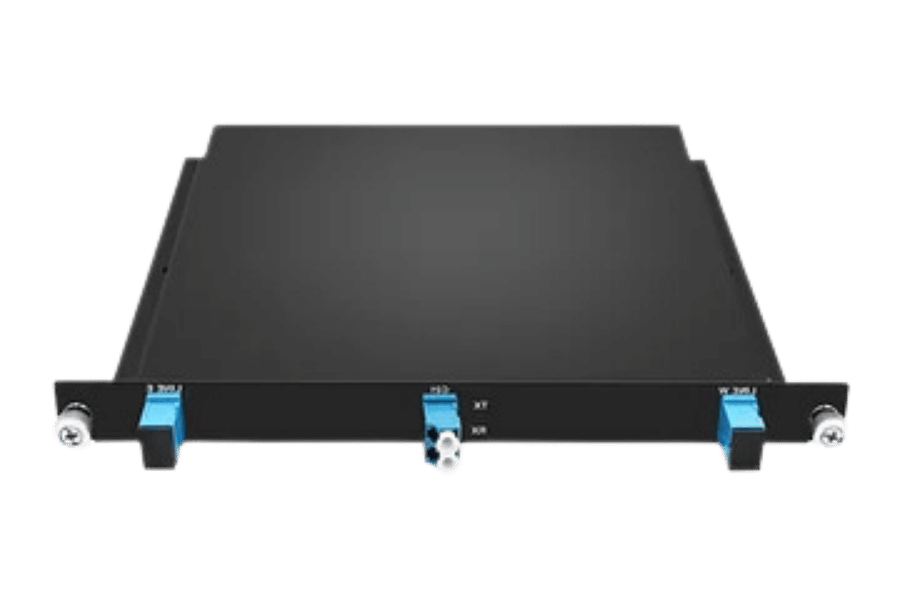
Q: What does the term passive WDM in optical networks refer to?
A: Passive Wavelength Division Multiplexing (WDM) is a technology used in fiber optic networks that sends various light signals down one strand of wire without using active electronic components. It does this using filters and multiplexers, among other passive elements, to combine and separate different wavelengths.
Q: How is passive WDM different than active DWDM solutions?
A: Passive WDM systems transmit optical signals through passive multiplexers and demuxes, whereas active DWDM systems use electronic transponders and amplifiers to manage/optimize those same signals.
Q: What are some advantages of using passive DWDM solutions?
A: Some benefits associated with deploying passive DWDM solutions include lower costs, reduced power consumption, easier network management; they are particularly beneficial where simplicity/affordability is required.
Q: Could you define what a DWDM multiplexer is?
A: A Dense Wavelength Division Multiplexing (DWDM) multiplexer is a piece of equipment that takes many different wavelengths from multiple fibers before combining them all onto one fiber for transmission along an optical line. This allows more channels to be sent over the same cable.
Q: In a passive WDM system, what function would a demux serve?
A: The demultiplexer (demux) in these systems separates out each individual channel so that it can be handled individually after being received together over one fiber-optic cable as part of an aggregated signal.
Q: What is the difference between CWDM and DWDM?
A: Coarse Wavelength Division Multiplexing (CWDM) uses fewer channels with wider spans to transmit signals, and vice versa for dense wavelength division multiplexing (DWDM). Therefore, CWDM is applicable over shorter distances, while DWDM can be used over longer distances.
Q: What are the applications of passive WDM solutions?
A: Passive WDM solutions find wide usage in metro and access networks, fiber-to-the-home setups, and any environment where cost and power efficiency are paramount, using passive CWDM and DWDM components. They are also used in dark fiber and point-to-point connections.
Q: How does an OADM function in a DWDM system?
A: In a DWDM system, an OADM may add or drop wavelength channels without affecting other channels, thereby allowing dynamic control of the optical network.
Q: What are the typical components of passive WDM systems?
A: Typical passive WDM system components include multiplexers, demultiplexers, optical filters, optical add-drop multiplexers (OADM), etc., which help in combining light signals coming from different sources into one stream or separating them back out again depending on their wavelengths.
Q: How does dense wavelength division multiplexing (DWDM) enhance channel capacity?
A: DWDM increases the number of gigabits per second that can be transmitted over an optical fiber because it allows many different wavelengths or channels to travel down one cable at the same time.
